Gallery
-
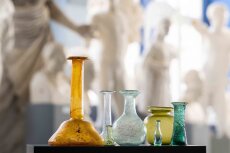
Ancient glass vessels from Mount Gerizim (Palestine) in the Collection of Ancient Small Art at the University of Jena
Image: Jens Meyer (University of Jena) -
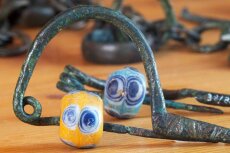
The bronze bow fibulae with slipped-on eye beads made of opaque glass were found in Montegiorgio (Italy) and date from the pre-Roman Iron Age. They are part of the Prehistory and Early History Collection of the University of Jena.
Image: Jens Meyer (University of Jena) -
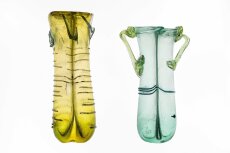
The late antique twin balsamaria originate from Mount Gerizim (Palestine) and were made in the 4th/5th century AD. They are part of the Antiquities Collection of the University of Jena.
Image: Jens Meyer (University of Jena) -
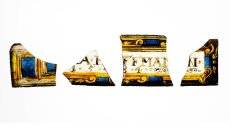
The fragments of leaded glass windows with stained glass from Vogelsberg in Thuringia date from the late Middle Ages and are part of the Prehistory and Early History Collection of the University of Jena.
Image: Jens Meyer (University of Jena) -
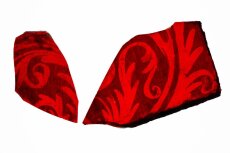
The fragments of leaded glass windows with stained glass from Vogelsberg in Thuringia date from the late Middle Ages and are part of the Prehistory and Early History Collection of the University of Jena.
Image: Jens Meyer (University of Jena) -
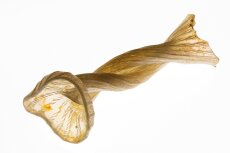
The fragment of the neck of a so-called »Kuttrolf« (wine decanter) was found in the Collegium Jenense from a cesspool next to the collegiate church. The object dates from the 16th/17th century and is part of the Prehistory and Early History Collection of the University of Jena.
Image: Jens Meyer (University of Jena) -
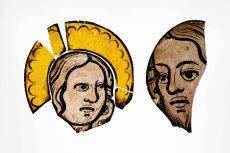
These fragments of leaded glass windows with stained glass date from the late Middle Ages and were found in Vogelsberg (Thuringia). They are in the Prehistory and Early History Collection of the University of Jena.
Image: Jens Meyer (University of Jena) -
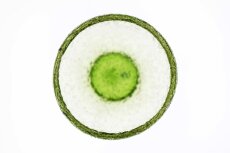
The Roman glass bowl from Mount Gerizim (Palestine) dates from the 3rd/4th century AD and is kept in the Antiquities Collection of the university.
Image: Jens Meyer (University of Jena) -
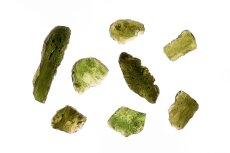
»Moldavites« (tektites) from the Czech Republic can be seen here. These rocks are also a form of natural glass. They were formed around 15 million years ago when a meteorite hit southern Germany, melting rock and hurling it miles into the air. Then the melt cooled, and glass was formed. The moldavites are named after their main place of discovery in today’s Czech Republic and are kept in the Mineralogical Collection at the University of Jena.
Image: Jens Meyer (University of Jena) -
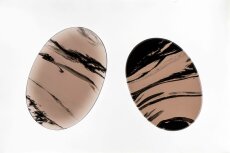
Polished obsidian discs – obsidian is a natural glass formed through rapid cooling of lava. The glass comes from Armenia and contains iron oxide deposits that appear black and reddish brown. The objects are kept in the Mineralogical Collection at the University of Jena.
Image: Jens Meyer (University of Jena) -
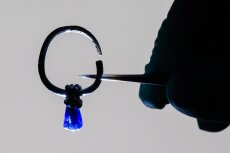
The silver earring with an attached bead made of blue glass originates from Hungary and dates from the 6th/7th century. It is part of the Prehistory and Early History Collection of the University of Jena.
Image: Jens Meyer (University of Jena) -
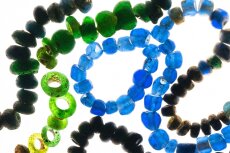
The glass bead necklaces date from the 6th/7th century and originate from Hungary. They are part of the Prehistory and Early History Collection of the University Jena.
Image: Jens Meyer (University of Jena)